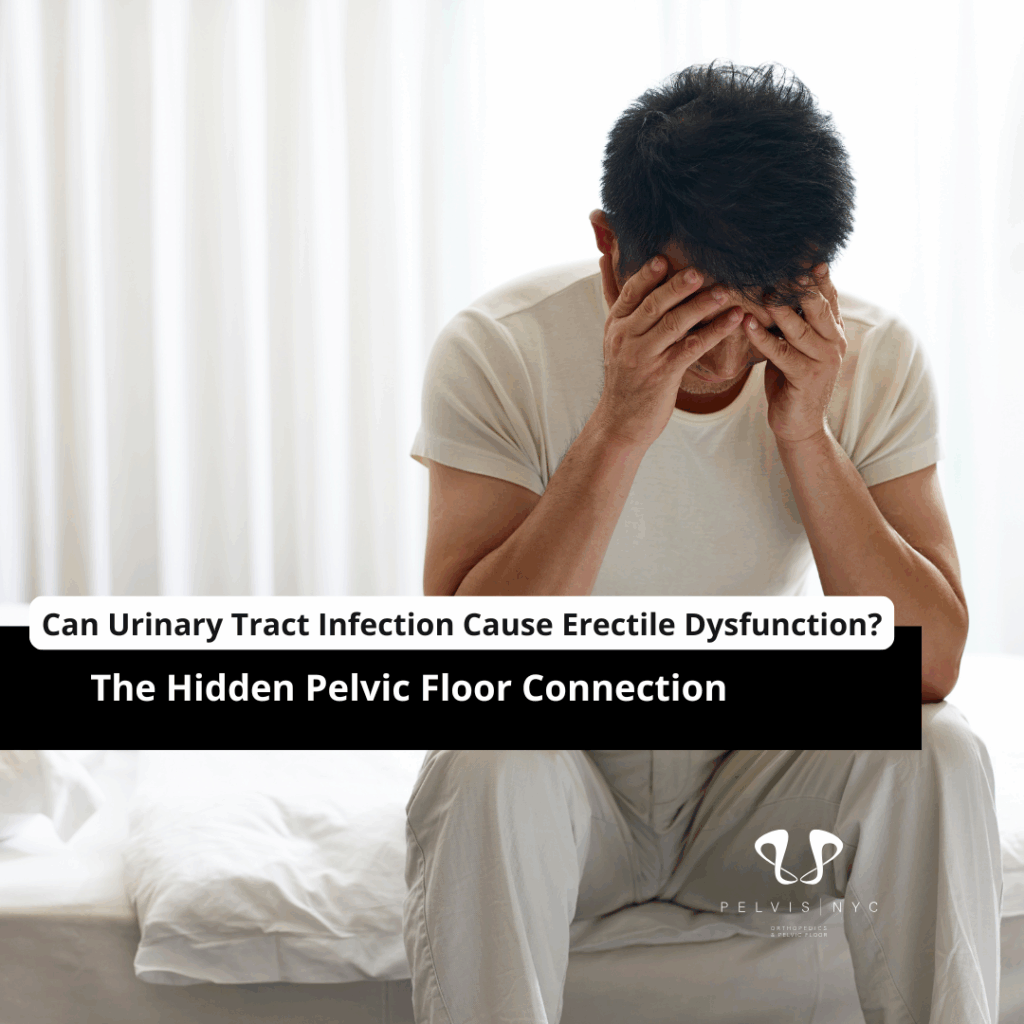Prostatitis isn’t a topic most guys are comfortable discussing—but if you’ve been dealing with pelvic pain, painful urination, or discomfort during sex, it’s time to face it head-on. Recognizing prostatitis symptoms early is crucial for seeking appropriate treatment and improving outcomes. The treatment of prostatitis isn’t about popping pills and hoping for the best. It’s about understanding your body, getting the right diagnosis, and taking control of your health. And yes, physical therapy plays a bigger role than most men realize.
What Is Prostatitis?
Prostatitis means inflammation of the prostate gland. It can hit men in their 20s, 40s, or 60s. There are distinct forms, including acute and chronic prostatitis. Acute prostatitis presents suddenly with severe symptoms, while chronic prostatitis involves recurrent or persistent symptoms that may be more subtle or intermittent. Symptoms vary, but here’s what most guys report:
- Pelvic or lower back pain (a type of genitourinary pain)
- Burning during urination
- Frequent urges to pee
- Lower urinary tract symptoms
- Painful ejaculation
- Erectile dysfunction
Different types of prostatitis call for different approaches, and understanding the best treatment of prostatitis depends on an accurate diagnosis.
Chronic Bacterial Prostatitis: The Stubborn Infection
This type is caused by lingering bacteria. You might feel like you have a UTI that never fully goes away. It creeps in slowly, and it keeps coming back. Recurrent infection and recurrent urinary tract infections are common in chronic bacterial prostatitis, often leading to persistent or episodic symptoms. Chronic infection can develop if the initial treatment is incomplete, making it difficult to fully eradicate the bacteria. Escherichia coli is the most common bacterial cause of chronic bacterial prostatitis. Treating chronic bacterial prostatitis is challenging and often requires prolonged antibiotic therapy to prevent recurrence.
What it feels like:
- Dull ache in the pelvis or perineum
- Recurrent UTIs
- Feeling like you’re never fully emptying your bladder
- Incomplete bladder emptying
- Recurrent symptoms
Treatment plan:
- Antibiotic therapy (long-term, 4-6 weeks or more): Appropriate antibiotic treatment is essential for bacterial prostatitis, targeting bacteria that penetrate prostatic tissue. The choice and duration of antibiotics should be based on pathogen sensitivity to ensure effective drug delivery into the prostatic tissue and reduce the risk of relapse.
- Symptomatic treatment: This includes medications tailored to individual symptoms, such as nonsteroidal anti inflammatory drugs (NSAIDs) for pain relief, paracetamol, and alpha-adrenergic antagonists.
- Anti-inflammatory meds
- Prostate drainage or massage (yes, it’s a thing)
- Pelvic floor physical therapy to help calm the aftershocks
If symptoms do not improve, monitor for complications such as prostatic abscess, which may require additional intervention.
Even after the infection is gone, many guys still deal with pain. That’s when physical therapy becomes a key component in the treatment of prostatitis.
Chronic Pelvic Pain Syndrome (CPPS): The Muscle-Tension Monster
This is the most common type of prostatitis. It is often referred to as chronic nonbacterial prostatitis or chronic abacterial prostatitis, terms that are frequently used interchangeably with chronic pelvic pain syndrome (CPPS). Prostatitis chronic pelvic pain is now recognized as a distinct syndrome, characterized by pelvic pain, urinary symptoms, and sometimes features similar to prostatitis. Interstitial cystitis is another condition with overlapping symptoms, making diagnosis challenging. Urinary symptoms may be related to issues at the bladder neck or due to bladder outlet obstruction, both of which should be considered during evaluation. Prostate inflammation and prostatic inflammation are possible contributors to the symptoms experienced in this condition. No bacteria. No infection. Just pain, tension, and frustration. It often gets misdiagnosed, and guys bounce from one doctor to another with no answers.
Symptoms include:
- Aching in the pelvis, groin, or lower back
- Pain during or after sex
- Urinary issues without infection
- Urinary obstruction (difficulty starting or maintaining urine flow, possibly due to bladder neck involvement)
- Urinary retention (inability to fully empty the bladder, which can be a complication of prostatic swelling)
- Feeling tight, stressed, or inflamed down there
The real issue?
Often, it’s your pelvic floor muscles going haywire. They’re tight, overworked, and stuck in a pattern of dysfunction. Dysfunction in the pelvic floor and surrounding prostatic tissue can also contribute to these symptoms.
What works:
- Pelvic floor physical therapy – internal and external manual release
- Breath training to reset your nervous system
- Postural correction to get your body in sync
- Trigger point therapy to release deep muscle knots
- Symptomatic treatment of prostatitis with medications like paracetamol, NSAIDs, or alpha-adrenergic antagonists may help manage pain and urinary symptoms
Chronic Prostatitis: When It Won’t Go Away
If you’ve had pelvic pain or urinary symptoms for more than three months, welcome to the club nobody wants to join.
Many patients diagnosed with chronic prostatitis face significant challenges in clinical practice, as the condition often involves chronic infection and recurrent symptoms that can be difficult to manage. The National Institutes of Health classification system is commonly used to categorize prostatitis, reflecting the complexity and heterogeneity of patient profiles. Chronic prostatitis is also discussed within the broader context of digestive and kidney diseases, including kidney diseases, due to their impact on urological health and overall well-being.
Chronic prostatitis might be bacterial or non-bacterial. What matters most is that it’s ongoing, and it’s affecting your quality of life.
The fix?
You need a multifaceted approach:
- Find out if there’s an infection
- If infection is found, treatment of prostatitis with appropriate antibiotics is crucial, selecting antibiotics based on the causative agent
- If not, shift focus to muscles, nerves, and lifestyle
- Add in targeted physical therapy
- Look at stress, diet, and mobility
Prostatitis treatments should be tailored to the underlying cause, using a symptom-focused strategy.
It’s not about being tough. It’s about being smart.
Diagnostic Tests: Know What You’re Dealing With
Prostatitis diagnosis begins with a thorough review of your medical history and a careful physical examination. Evaluating risk factors, such as previous urinary tract infections, recent procedures, or other underlying conditions, is essential for accurate assessment.
You can’t treat what you haven’t properly diagnosed. Testing may include:
- Urinalysis and culture to check for urinary tract infection and urinary tract infections, as well as to analyze white blood cells.
- Semen analysis for infection and inflammation.
- PSA blood test (prostate specific antigen and serum prostate specific antigen) to help differentiate prostatitis from prostate cancer, though PSA can be mildly elevated in prostatitis.
- Prostate fluid test including analysis of prostatic fluid, prostatic secretions, and prostate secretions for white blood cells and bacteria.
- Imaging in complicated cases, or to assess for enlarged prostate or other abnormalities.
It is important to rule out benign prostatic hyperplasia, prostate cancer, and other conditions as part of the diagnostic process. Screening for sexually transmitted diseases may also be warranted.
And here’s something most urologists don’t talk about: pelvic floor dysfunction. It’s often the missing piece in the treatment of prostatitis, and it doesn’t show up on a lab report. That’s why a pelvic floor assessment by a trained physical therapist is gold.
Asymptomatic Prostatitis: No Symptoms, But Still There
Sometimes, prostatitis shows up in lab results when you’re not even feeling it. Prostate inflammation may be detected in asymptomatic cases through laboratory testing, such as during a fertility check or PSA test.
Should you worry?
- Not always
- But it’s worth monitoring
- A pelvic floor check might still be smart
The Power of Physical Therapy in Treating Prostatitis
Here’s the deal: If you’ve ruled out infection and you’re still in pain, there’s a high chance your pelvic floor is the problem.
Physical therapy isn’t just for athletes. It’s for men like you who are tired of:
- Waking up with pelvic tightness
- Dreading urination or sex
- Feeling like no one takes their pain seriously
At Pelvis NYC, we offer:
- Internal and external manual therapy
- Tailored exercise plans
- Stress management techniques
- Real talk, real solutions
We don’t just treat symptoms. We treat men who are ready to reclaim their health.

Managing Psychological Symptoms: Mind Over Matter
Why your mental health matters
Let’s be real—dealing with chronic prostatitis, chronic bacterial prostatitis, or chronic pelvic pain syndrome (CPPS) isn’t just a physical battle. The constant pelvic pain, unpredictable symptoms, and frustration of not getting clear answers can take a serious toll on your mental health. Anxiety, stress, and even depression are common companions for men facing chronic prostatitis or nonbacterial prostatitis.
Ignoring these psychological symptoms doesn’t make them go away—in fact, it can make treating prostatitis even harder. When your mind is weighed down by worry or hopelessness, your body feels it too. That’s why addressing mental health is just as important as tackling the physical side of pelvic pain syndrome CPPS or bacterial prostatitis. By recognizing the emotional impact, you give yourself a better shot at real, lasting relief.
Strategies for coping and support
So, how do you take care of your mind while managing prostatitis? Start by building a toolkit of strategies that target both stress and symptom control:
- Stress management techniques: Simple practices like meditation, deep breathing, or mindfulness can help calm your nervous system and reduce anxiety. Even a few minutes a day can make a difference.
- Cognitive-behavioral therapy (CBT): Working with a therapist trained in CBT can help you break the cycle of negative thoughts and behaviors that often come with chronic prostatitis, acute bacterial prostatitis, or asymptomatic inflammatory prostatitis.
- Support groups: Connecting with other men who understand what you’re going through can be a game-changer. Sharing experiences and advice helps you feel less alone and more empowered.
- Pelvic floor physical therapy: While it’s great for physical symptoms, pelvic floor PT can also ease psychological symptoms by giving you more control over your body and reducing the stress that comes with chronic pain.
Remember, managing psychological symptoms is not a sign of weakness—it’s a smart, proactive step in treating prostatitis, whether you’re dealing with bacterial infections, chronic prostatitis, or any of the prostatitis syndromes. Work with your healthcare provider to create a plan that supports both your body and your mind. You deserve to feel better—inside and out.
Ready to Take Action?
You’ve read enough. Now it’s time to do something about it.
If you’re dealing with prostatitis—whether it’s your first flare-up or you’ve been living with it for years—you don’t have to keep suffering.
👉 Pelvis NYC has your back (and your pelvis). Book a consultation with our expert pelvic floor physical therapists who understand what you’re going through.
Take the first step. Get strong. Get answers. And get better.
Related Blog: Prostatectomy Pain: What You Should Know About Recovery




No comment yet, add your voice below!